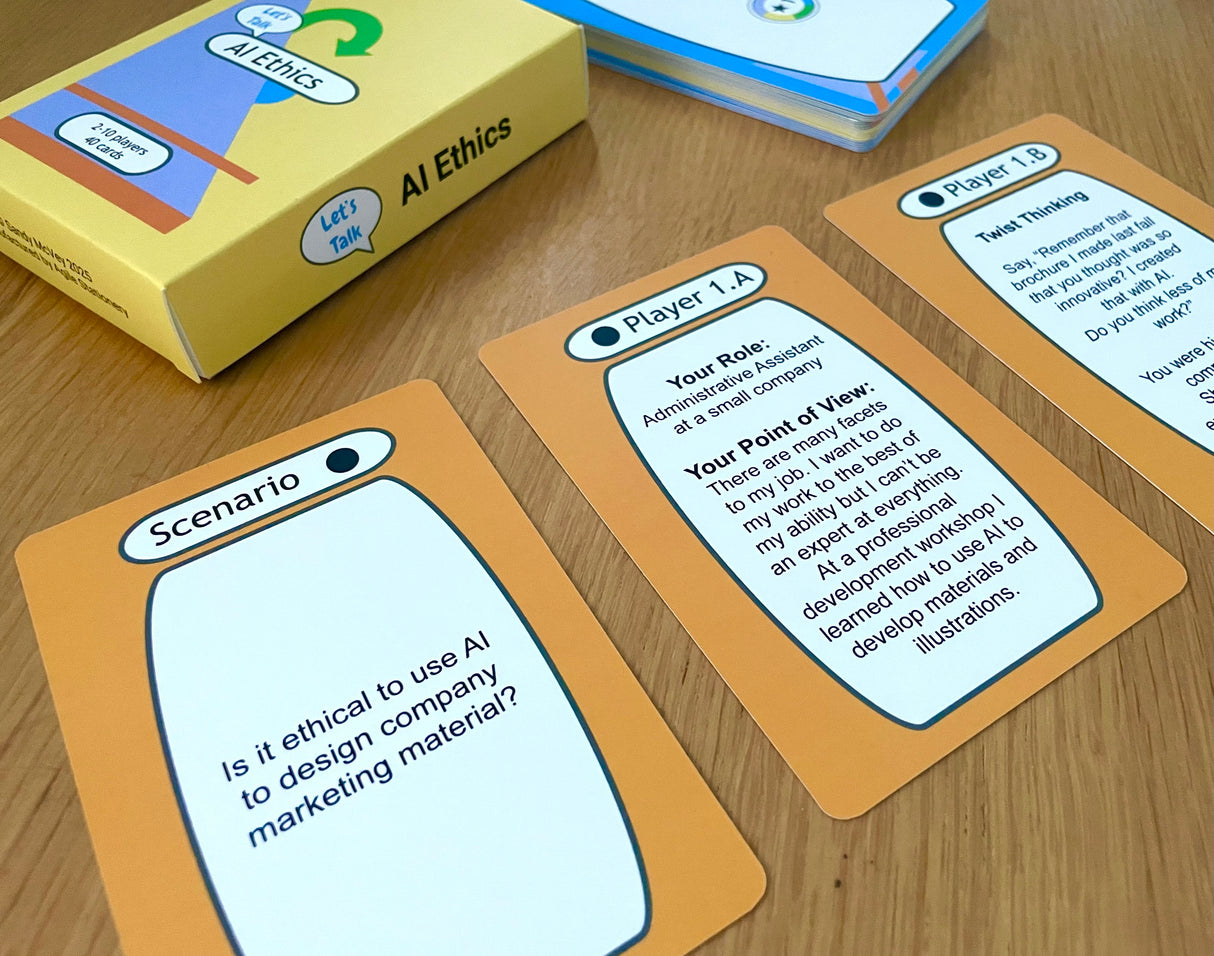Let's Talk AI Ethics by Sandy McVey
Let's Talk AI Ethics by Sandy McVey is backordered and will ship as soon as it is back in stock.
Outcome
Outcome
Activities have been designed to support the exchange of views regarding the implications of incorporating AI technology in the workplace and for educational purposes. Applications explore the advantages and potential corruptive influences of unchecked or unmonitored AI usage.
The goal is to promote open conversation about responsible AI adoption. Each discussion probes the value of AI tools and reflective application in common Scenarios identified by symbols.
Learn more
Learn more
Crowdsourced AI Ethics Volunteer Resources, https://bit.ly/LinkedInAIEthics.
Alan Robertson. Helping regulated UK firms operationalise Responsible AI | AI Ethics & GRC Strategist | Cybersecurity Leader | Ambassador @ Global Council for Responsible AI, UK | Author, forthcoming book on AI Alignment.
Ethical AI Alliance LinkedIn, www.linkedin.com/company/ethical-ai-alliance
Manufactured by Agile Stationery
Manufactured by Agile Stationery
Experts in delivering the right kind of conversations. Slick cards in robust boxes. The best there is outside the casinos.
Let’s Talk AI Ethics is a role-playing game that allows co-workers, classmates, and willing groups of adults and future leaders discuss some of the most interesting and challenging AI applications being faced today. Through role play, participants explore difficult conversations regarding real life AI scenarios. Players will be assigned specific roles, and sometimes personality traits. They are encouraged to embellish and embrace viewpoints that may not be their own during Active Play.
There are 5 Scenarios. Each Scenario is tied to one or more of the following topics:
- How AI Works
- Evaluating AI Information
- Authenticity & Critical Reflection
- Citing AI Tools
- Emerging Ethical Issues
- Prompting Effectively
Informational content was developed by Maria Barefoot and Amanda McCollom, University of Delaware Library. The content was summarized using ChatGPT. The material was further refined and tied to educational scenarios developed by Sandy McVey.
University of Delaware Library, Museums and Press. "AI Literacy: Algorithms, Authenticity, and Ethical Use." University of Delaware Library, 2025, https://guides.lib.udel.edu/AI/.
Let’s Talk AI Ethics ©2025 Sandy McVey






